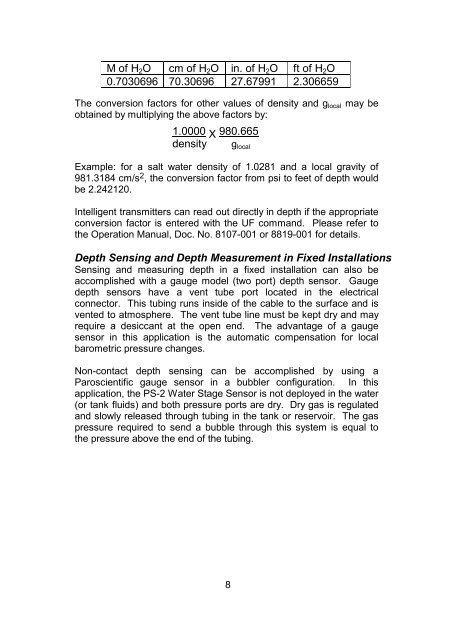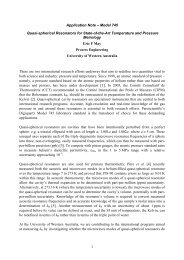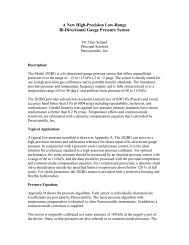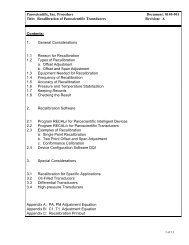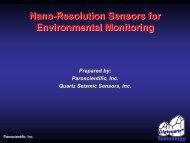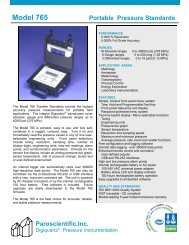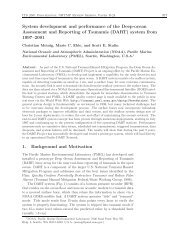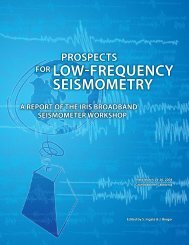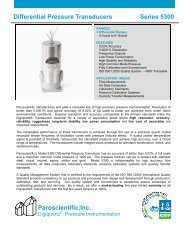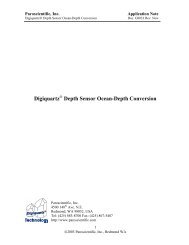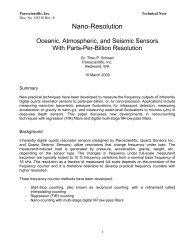Paroscientific, Inc.
Paroscientific, Inc.
Paroscientific, Inc.
You also want an ePaper? Increase the reach of your titles
YUMPU automatically turns print PDFs into web optimized ePapers that Google loves.
M of H 2 O cm of H 2 O f in. of H 2 O ft of H 2 O0.7030696 70.30696 27.67991 2.306659The conversion factors for other values of density and g local may beobtained by multiplying the above factors by:1.0000 X 980.665density g localExample: for a salt water density of 1.0281 and a local gravity of981.3184 cm/s 2 , the conversion factor from psi to feet of depth wouldbe 2.242120.Intelligent transmitters can read out directly in depth if the appropriateconversion factor is entered with the UF command. Please refer tothe Operation Manual, Doc. No. 8107-001 or 8819-001 for details.Depth Sensing and Depth Measurement in Fixed InstallationsSensing and measuring depth in a fixed installation can also beaccomplished with a gauge model (two port) depth sensor. Gaugedepth sensors have a vent tube port located in the electricalconnector. This tubing runs inside of the cable to the surface and isvented to atmosphere. The vent tube line must be kept dry and mayrequire a desiccant at the open end. The advantage of a gaugesensor in this application is the automatic compensation for localbarometric pressure changes.Non-contact depth sensing can be accomplished by using a<strong>Paroscientific</strong> gauge sensor in a bubbler configuration. In thisapplication, the PS-2 Water Stage Sensor is not deployed in the water(or tank fluids) and both pressure ports are dry. Dry gas is regulatedand slowly released through tubing in the tank or reservoir. The gaspressure required to send a bubble through this system is equal tothe pressure above the end of the tubing.8


